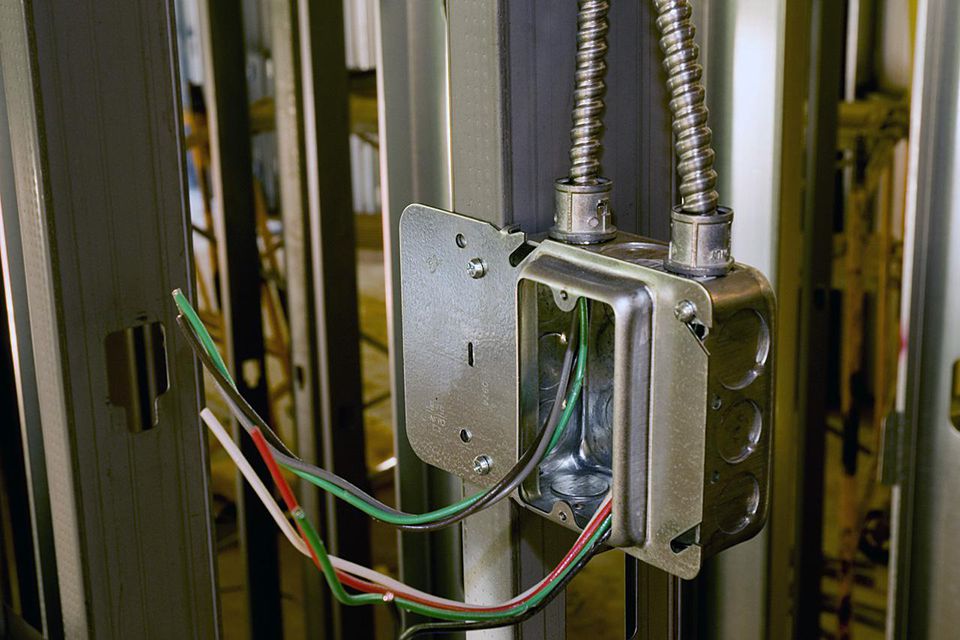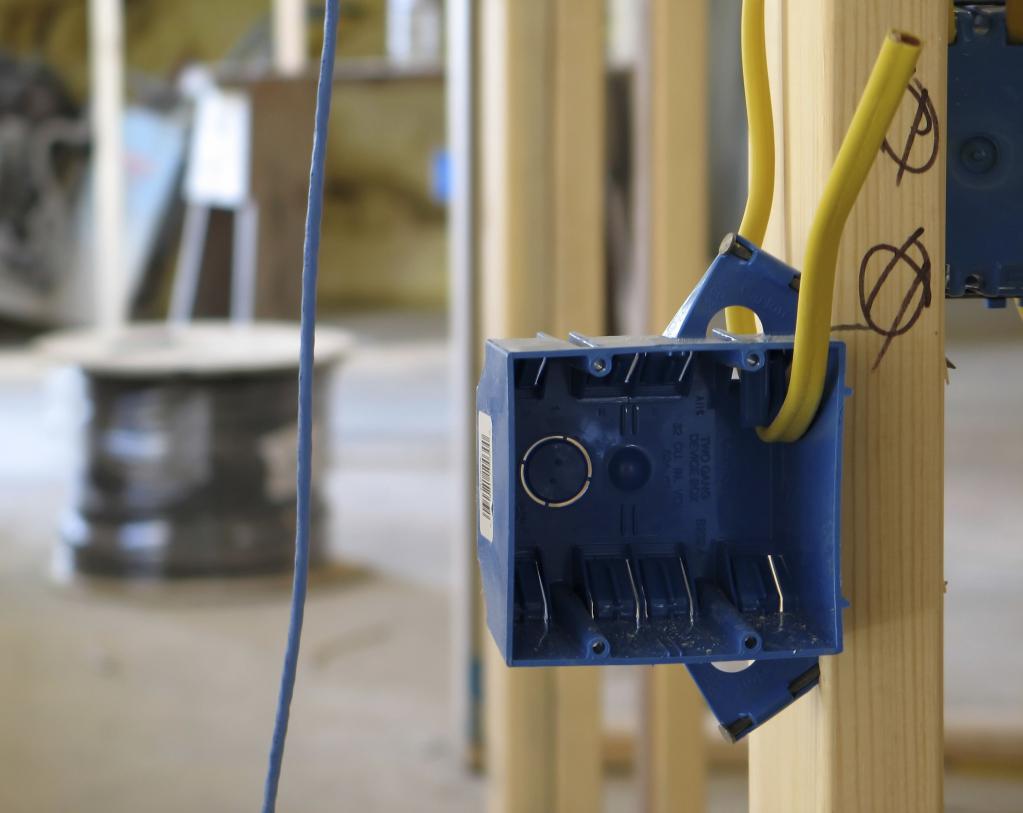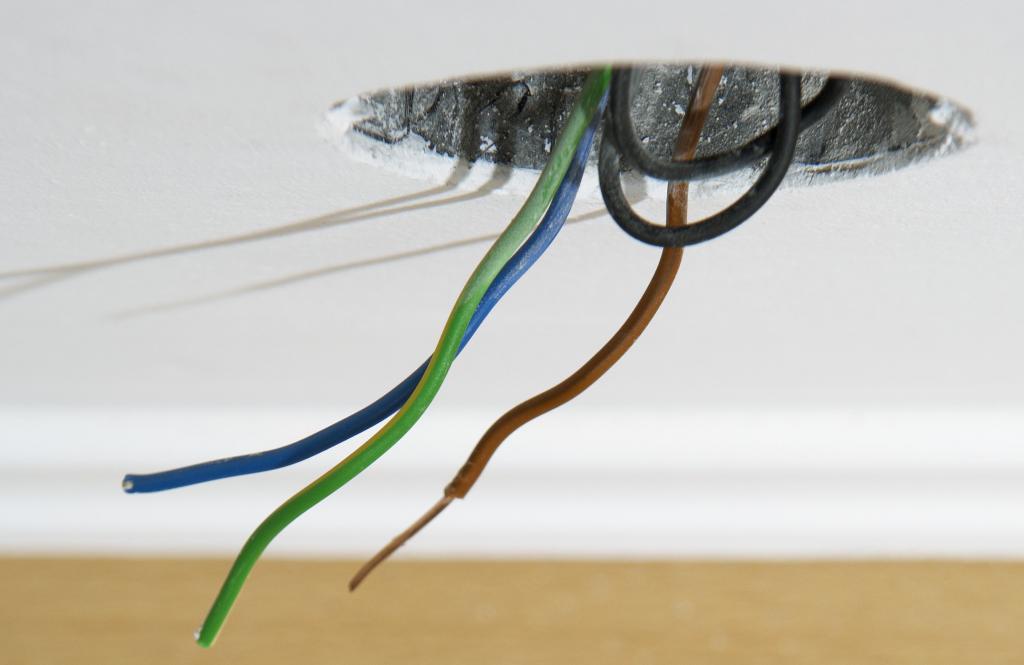In total, there are two types of electrical wiring - internal and external. The latter is exposed to atmospheric phenomena - it is located outside the buildings. It is divided into hidden (for example, underground) and open (without any protection or in cable channels). Internal wiring is located inside buildings, and it can also be hidden and open. When designing a power supply system at home, it is necessary to take into account all the features of each type of wiring in order to choose the best option.
How to choose a wiring

When choosing an external wiring, you must pay attention to the following points:
- Are there any ground obstacles - if you plan to lay the cable underground.
- The total value of the distance from the house to the power distribution device (or support).
- The maximum power that all electrical appliances in the house will consume.
Outdoor open wiring is most often used in the private sector and in rural areas - when several buildings on different streets receive electricity from one substation through wires located on poles.
In city conditions and in industrial areas, a closed type of outdoor wiring is used. All buildings are located very compactly, so all power lines are located underground. In buildings, wiring is carried out taking into account design and accessibility. The open type of wiring is located directly on the surface of the ceiling or walls. Closed stacked in strobes or cable channels.
Open type outdoor wiring
Outdoor open wiring is mounted on overhead power lines. In their design there are wooden or reinforced concrete supports, cables and wires. There are rules for the operation of electrical installations (abbreviated as PUE), it is recommended to adhere to such standards during installation:
- A distance of at least 2.75 m must be maintained from the horizontal surface to bare wires. The horizontal surface is the roof of the building, the ground, etc.
- The distance from the surface to the wires should be more than 6 meters if laying above the road.
- It is impossible to lay overhead lines on the roofs of buildings. An exception is the supply of power to the building.
- The distance between two adjacent uninsulated wires should not be less than 15 cm (at a voltage of 220 V).
- From the nearest wire to the balcony should be more than one and a half meters.
In order to connect a separate building to the power line, it is allowed to use aluminum wires with insulation (type CIP) or without it. Recently, they prefer SIP wires, since they are reliable and durable, it is easier to work with them.

The service life of aluminum wire is more than 45 years - this is the guarantee usually given by manufacturers. Aluminum is a relatively cheap metal that can withstand any climatic adversity. The main thing is to choose the right section. To do this, it is necessary to calculate in advance the total capacity of electricity consumers in the house, take into account the starting currents of electric motors (if any), add about 25% for the reserve.
Wire features
As a rule, entry into the building is carried out using a SIP cable. If the question is, choose copper or aluminum, it is best to give preference to the first, since they have a large electrical conductivity (30%), overheating occurs much less often. But it is forbidden to twist copper and aluminum wires - they will quickly oxidize and electrical conductivity will be lost (if not completely, then partially).

To connect copper and aluminum wires, you must use adapter clamps. Twisting is allowed when using wires of the same metals. As for insulation, the polyvinyl chloride is able to serve even in extreme conditions for over 25 years. Copper wires with PVC insulation of the VVG brand and aluminum AVVG are intended for connection to the overhead line. But the problem is that polyvinyl chloride is quickly destroyed by UV light. For this reason, it is advisable to use such wires for input.
Concealed outdoor wiring
In cities, there is very little space, so the open type of power transmission is used exclusively for the functioning of street lighting. The rest of all electrical networks are hidden in communications underground. Using cable routes, all buildings are connected to transformer distribution substations.

All cables are laid in concrete gutters or metal pipes. They are reliably insulated so that moisture does not affect them. Insulation made of polymers and artificial rubber is used. For laying external concealed wiring, wire grades of the type AWRG (sheath made of PVC, aluminum conductors) and VRG (similar sheath, copper conductors only) are used.
Indoor open wiring
Electrical wiring in a wooden house can be performed using glass or ceramic insulators. This gives a little shade of antiquity - in this way the laying of wires was carried out literally 40-50 years ago. A wire of two cores twists and stretches between the insulators. The distance from the wall or ceiling to the wire should be at least 2.5 cm.

But this type of wiring is problematic - it is difficult to find suitable insulators. To buy enough for wiring in a wooden house, you need to visit a lot of flea markets or old villages. This type of wiring has one advantage - all elements and sections of the circuit are easily accessible, which facilitates the repair work. But not only the search for insulators can cause difficulties, making a twisted wire is also not easy. It is advisable to use a copper wire with rubber insulation.
Features of open wiring
PR type copper wires with a conductor cross section of more than 1.5 square meters. mm and insulation made of threads and rubber are used for laying inside pipes. Open wiring is often used in offices. It is convenient in cases where there is often a change of owners or tenants. Such changes may entail a redevelopment of the premises.

But the plastic cable channels, which are used when laying an open type of wiring, there is one drawback. If the walls have a slight bend, then it will immediately catch your eye. Therefore, it is advisable to install cable channels only on flat surfaces. And the main advantage is the availability of all sections of the electrical circuit. Therefore, the wiring is easy to repair.
Types of cable channels for wiring
Laying cable channels for wiring is carried out directly on the surface of the ceiling and walls. The polyvinyl chloride from which the channel is made is non-combustible and does not conduct current. In addition, he has an attractive appearance - it will fit into any type of interior. The size of the cable channels is selected taking into account how many wires will be laid inside. It is also necessary to pay attention to their cross section. There are many elements to carry out wiring: internal and external corners, crosses and tees, boxes made of plastic.
For wiring, cables with PVC insulation are used. As a rule, wires with copper conductors are used. The cross section of the wires is selected based on how much power consumers have. Another type of cable duct for electrical wiring is baseboards with cavities inside. They consist of two structural elements: a decorative cover and a box attached to the wall.
Staples
A very reliable type of wiring is open using brackets. True, from an aesthetic point of view, it is not very attractive. Often, this type of wiring is used in production when laying a lighting network or for powering machine tools of small power. In electrical wiring, wires with copper conductors and rubber insulation (common sheath) are used. NRG brand cable or ORS wire less than 4 square meters. mm
Concealed internal wiring
As a rule, installation of electrical wiring in a new apartment is carried out using a strobe - these are ditches in the walls into which the cable is laid. In fact, if there is no easy access to the wiring, it is considered hidden. Wires can be hidden behind the frame structures, in the walls, ceiling, under the floor. This is a hidden wiring, as there is no access to the circuits.

When assembling a false ceiling, it is necessary to install lighting elements. At the same time, spot and box lamps are built in the ceiling, lamps and chandeliers are suspended. Wiring is carried out using corrugated tubes mounted on the frame. Corrugation service life over 15 years. If the walls are concrete or brick, then the wires are hidden in the thickness of the plaster.
Sometimes corrugated or metal-plastic pipes are laid in the walls - this type of wiring is called interchangeable. If necessary, you can easily remove the old wires and install new ones instead. Now you know how to conduct wiring in a private house and apartment. There are few ways, so it is difficult to get confused.
